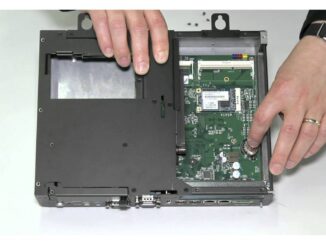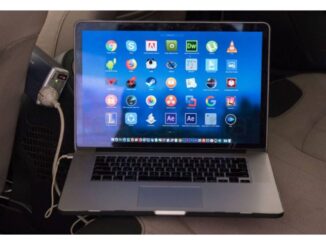
Edge computing has been around for a while, but it has only recently become more popular.
This is because the factors that have made it cheaper and easier to use have only recently come into play.
This article will discuss some of those factors and how they’ve helped make edge computing more accessible.
[In addition, you can also learn What is meant by a Dedicated Computer]
As technology advances, the cost of edge computing falls. This is due to what is known as Moore’s Law.
Moore’s Law states that the number of transistors on a chip doubles every two years, while the cost of making those chips halves.
This Law has held for decades and has made edge computing cheaper and easier. As the cost of making chips falls, so too does the cost of it.
My other Recent Reviews
- 10 Best Laptops Under 50000 in India 2024: Best Picks 2024 2024-06-04
- How To Disable Quick Heal Antivirus In Windows 10 2024-06-04
- What is the Speed of Computer Measured In 2024-06-03
- How To Shut Down Lenovo Laptop 2024-06-03
- How To Connect Jio Phone To Laptop 2022-10-19
Cloud Computing
 Edge Computing is a type that brings information storage and computation closer to the location where it is needed.
Edge Computing is a type that brings information storage and computation closer to the location where it is needed.
This can be done by bringing the computation and data storage closer to the user or by bringing the user closer to the computation and data storage.
It can improve performance, reduce latency, and conserve bandwidth.
Cloud computing has made it cheaper and easier by providing a way to share resources among many users.
Cloud providers like Amazon Web Services (AWS), Microsoft Azure, and Google Cloud Platform (GCP) offer pay-as-you-go models that allow users to use only the resources they need.
This makes it possible for organizations of all sizes to benefit from it without making a large upfront investment.
In addition, cloud providers offer various services that can be used for it, such as content delivery networks (CDNs), serverless computing, and containerized applications.
These services make it easy to deploy and manage applications at the edge.
The Internet of Things
The Internet of Things is upon us. And with it, the need for edge computing is becoming more and more apparent.
Fortunately, several factors have made it cheaper and easier in recent years.One major factor is the declining cost of hardware.
The price of sensors, for example, has fallen sharply in recent years. This, in turn, has made it more economical to deploy its solutions.
Another important factor is the increasing availability of high-speed connectivity.
This is essential for transmitting data from devices at the network’s edge back to the cloud or data center.
Fortunately, there has been a proliferation of high-speed cellular and WiFi networks in recent years.
Finally, advances in software have made it easier to develop and deploy its solutions. In particular, containerization and serverless technologies have made it much simpler to start with it.
As a result, we may see a continued increase in the edge computing use in future.
Big Data
 Another major factor that has made it cheaper and easier is the advent of Big Data.
Another major factor that has made it cheaper and easier is the advent of Big Data.
With the ability to collect and process large amounts of data, businesses and organizations can now get insights they need to improve their operations and make better decisions.
This has led to a growing demand for edge computing solutions that can handle big data workloads.
Open Source Hardware and Software
One of the most popular open source platforms for it is the Raspberry Pi, a low-cost, credit-card-sized computer that can be used for various applications.
The Raspberry Pi has been used to build everything from weather stations to home security systems.
Another popular open-source platform is Arduino, a microcontroller used to build various electronic devices.
Arduino devices are often used with Raspberry Pis to create more complex solutions.
Several open-source software platforms, such as the Node-RED platform, can be used for it, making it easy to develop event-driven applications that run on small devices like the Raspberry Pi.
The availability of these open source platforms has made it possible for anyone to develop and deploy edge computing solutions without investing in expensive proprietary hardware or software.
Virtualization
Virtualization is also a key factor that has made it cheaper and easier.
It can be deployed on any physical or virtual machine by virtualizing the hardware, software, and networking resources.
This makes it possible to deploy it on commodity hardware, reducing costs.
In addition, virtualization enables easy provisioning and management of resources, which further reduces the complexity and cost of deploying and managing it.
Conclusion
Edge Computing has become cheaper and easier for several reasons:
The cost of hardware and software has decreased significantly. The data processing speed of edge devices has increased dramatically.
Wireless connectivity is now ubiquitous, making it easy to connect edge devices to the internet.
There is a growing ecosystem of companies that provide its solutions.
Note: The below product recommendation is purely based on my particular opinion, and it does not produce to promote any individual products.




Be the first to comment